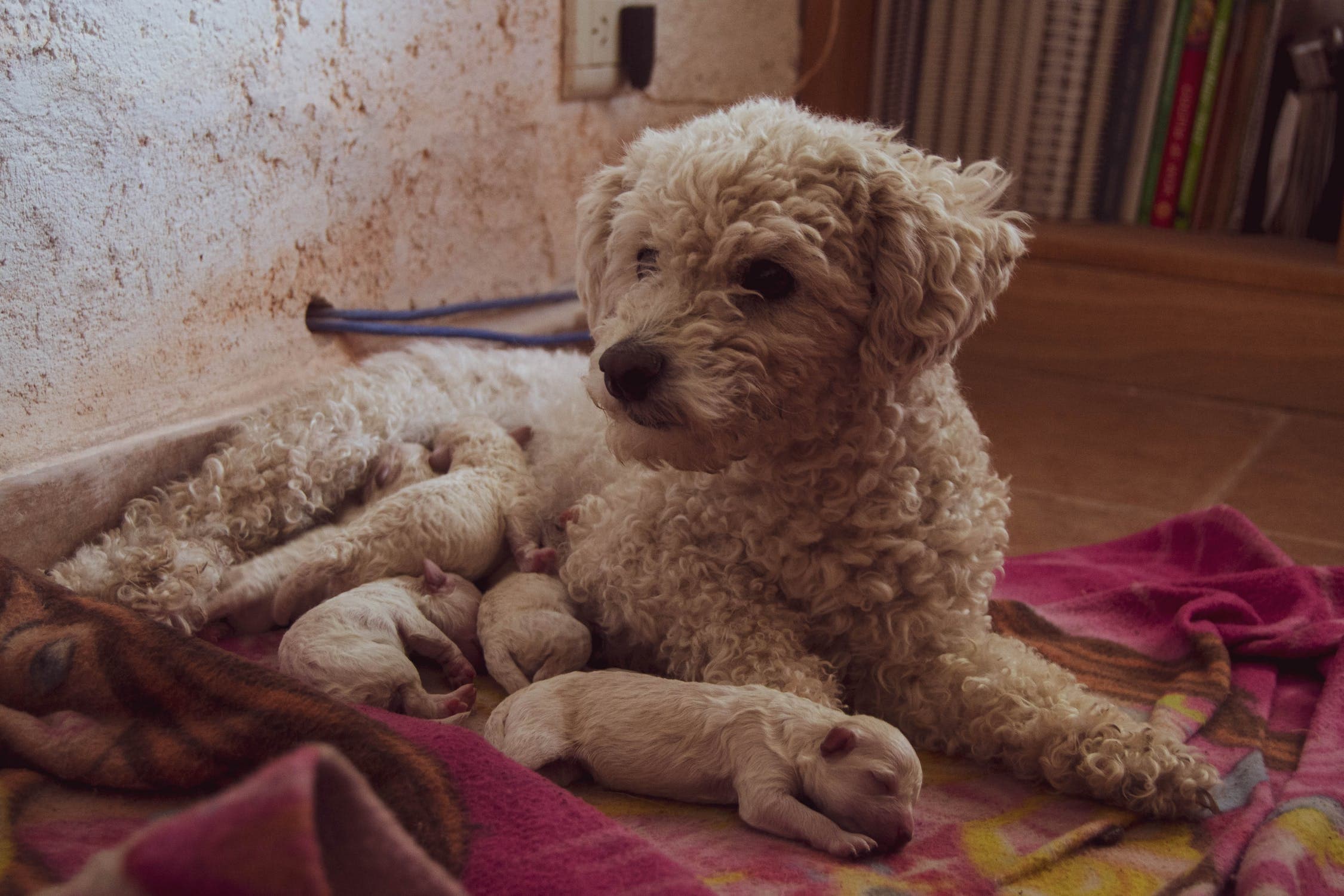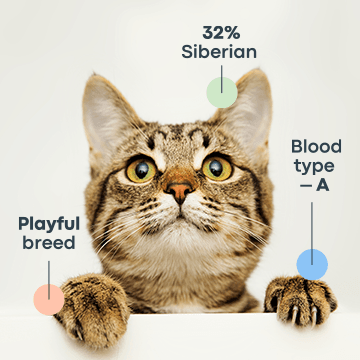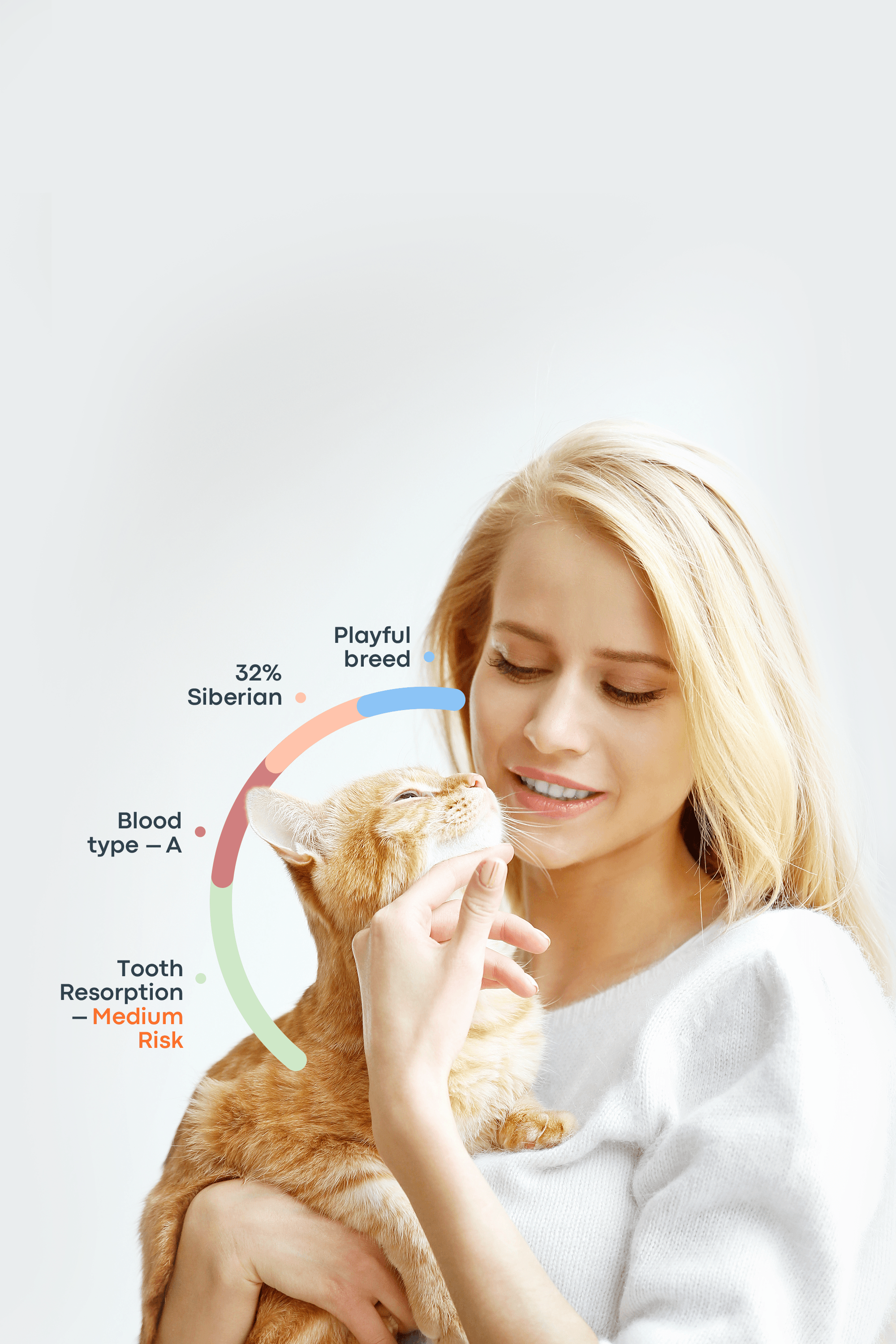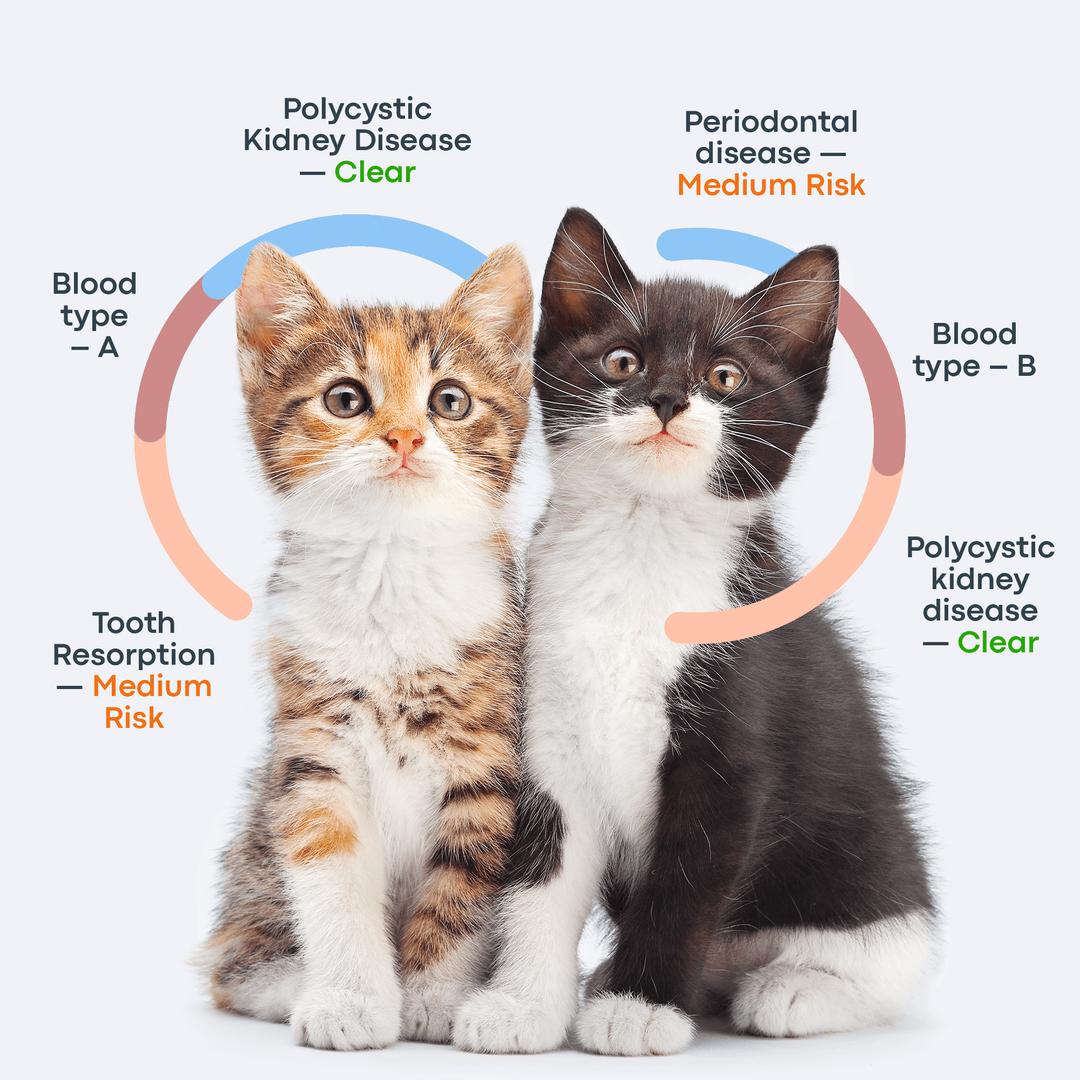In this comprehensive guide, we delve into the intriguing question of "How many puppies can a dog have?" We'll shed light on factors that determine litter size, spanning from breed and age to overall health conditions. We aim to equip you with the knowledge necessary to anticipate and manage litters, facilitate a smooth birthing process, and ensure effective puppy care. Get ready to dive deep into this fascinating aspect of canine life.
How Many Puppies Can a Dog Have? Understanding Dog Litter Sizes
An average litter can range from 1 to 12 puppies, and the average litter size is around 4 to 6. However, certain factors influence the litter size. Each litter size varies depending on a mother dog’s breed, size, age, nutrition, overall health, and genetics.
Smaller-breed dogs typically have smaller litters, and larger-breed dogs have larger litters. It happens because larger-breed dogs have more space in their uterus than smaller-breed dogs.
It is important to note that the mother dog’s overall health and diet can also affect the size of the litter. Healthy mothers free from disease tend to have larger litters and conceive more easily.
Other factors that may influence a dog’s litter size are the season and breeding practices. According to a recent study, dogs that are bred in the spring may have a larger litter size on average than the ones bred in the summer.
Factors That Affect Litter Size in Dogs
Breed
For instance, larger breeds like Great Danes or Saint Bernards tend to have larger litters than smaller breeds like Chihuahuas or Dachshunds.
Age
Dogs in their prime reproductive years often have larger litters than very young or older dogs.
Health
A dog's overall health, including her nutritional state, can affect litter size. Healthier dogs with balanced diets often have larger litters.
Genetics
Just like in humans, some dogs may naturally have larger or smaller litters based on their genetic makeup.
Frequency of Breeding
A dog that is bred frequently may have smaller litters than a dog that is bred less often.
Size of Previous Litter
A dog that has had a large litter in the past is likely to have a large litter in the future.
The Role of Breed in Determining Litter Size
Certain breeds are predisposed to have larger litters than others, primarily due to their physical size, genetic predispositions, and unique health considerations.
Let’s discuss the litter sizes of different dog breeds.
How many puppies do Chihuahuas have?
Chihuahuas typically have litters of 1 to 4 puppies, but this small breed can also have litters of 5 to 6 puppies.
How many puppies do Yorkies have?
Yorkie litters usually range from 1 to 5 puppies, with an average of around 4.
How many puppies do Shih Tzus have?
Though the litter size of Shih Tzus can vary from 1 to 10, their average litter size is between 3 and 6 puppies.
How many puppies do pugs have?
Pug litters generally range from 2 to 6 puppies. Their average litter size is 4 to 6 puppies, but it can vary from 1 to 9 puppies.
How many puppies can a French Bulldog have?
French bulldogs usually have 2 to 4 puppies in a litter, with an average litter size of 3 to 5.
How many puppies do Dachshunds have?
Dachshunds typically have litters of 1 to 6 puppies. However, these dogs can have more puppies depending on their size.
How many puppies do English Bulldogs have?
English bulldogs typically have small litter sizes, with an average of 3 to 4 puppies.
How many puppies can a pitbull have?
Pitbulls can have 5-6 puppies per litter, but larger female pitbulls can even have litters of puppies ranging from 2 to 10.
How many puppies do Goldendoodles have?
Goldendoodles typically have 3-6 puppies per litter but can vary from 1 to 12. The litter size depends on certain factors, like genetics, mother’s health, and environmental conditions.
How many puppies can a Dalmatian have?
Dalmatians can have around 6 to 9 puppies per litter; however, this dog breed can even have larger litters up to 15 puppies.
How many puppies can a Golden Retriever have?
A golden retriever can typically have between 6 and 8 puppies in a litter.
How many puppies can a Labrador have for the first time?
Labradors usually have smaller litters during their first breeding, with litter sizes typically ranging from 5 to 8.
How many puppies can a Husky have?
Huskies can typically have between 4 and 8 puppies in a litter.
How many puppies can a German shepherd have?
A German shepherd can typically have between 5 and 9 puppies in a litter.
Below is a list of different small and large dog breeds and their average litter sizes.
Breed | Average Litter Size |
Chihuahua | 1-3 puppies |
Yorkshire Terrier | 4 puppies |
Shih Tzu | 3 puppies |
Pugs | 4-6 puppies |
French Bulldog | 3-4 puppies |
Dachshunds | 3-5 puppies |
English Bulldog | 3-4 puppies |
Pitbull | 3-10 puppies |
Goldendoodle | 3-8 puppies |
Dalmatian | 6-9 puppies |
Golden Retriever | 4-12 puppies |
Labrador Retriever | 7-8 puppies |
Husky | 4-8 puppies |
German Shepherd | 6-8 puppies |
Small Dogs vs. Large Dogs: Which Have Bigger Litters?
It's a common misconception that larger dog breeds always have bigger litters. While size can be a factor, genetics, health, and other factors also strongly influence litter size. Let's explore this in more detail.
How Many Puppies Can a Small Dog Have?
Small dogs, despite their size, can surprise you with the number of puppies they can have. On average, small breeds will typically carry between 1 and 5 puppies. Yorkshire terriers usually produce a litter size ranging from 3 to 5 puppies. Pomeranians tend to have smaller litters, usually between 1 and 4 puppies.
How Many Puppies Can a Large Dog Have?
Large dogs tend to have bigger litters than small breeds, but this is not always the case. Generally speaking, large dog breeds like Great Danes and Labrador Retrievers will produce a litter size ranging from 6 to 8 puppies.
Does Age Matter? How a Dog's Age Can Affect Litter Size
As dogs reach their prime breeding years, generally between their second and fifth year, they are likely to produce larger litters. Young dogs, particularly those breeding for the first time, typically have smaller litters as their bodies are still maturing.
On the other hand, older dogs, usually beyond their seventh year, may see a decrease in litter size due to declining fertility.
The Connection Between a Dog's Health and Litter Size
The answer to the question “How many puppies can a dog have the first time?” may depend on the diet. Nutritional deficiencies or other health issues can decrease litter size or result in unhealthy puppies. The nutritional requirements of pregnant dogs differ from those of the general population.
They need additional energy and nutrients to support both themselves and their growing pups. Providing your dog with a balanced, nutrient-rich diet is vital to ensure the health of both mother and puppies, as well as maximize litter size.

How to Determine If Your Dog Is Pregnant?
Here are a few signs and behavior changes that may indicate your dog is pregnant:
Pregnant dogs are often less active and may sleep more than usual. As the pregnancy advances, the dog may seek out quiet, comfortable places for whelping.
Dogs may experience increased thirst and urination during pregnancy due to hormonal changes.
Depending on the size and breed of the dog, weight gain will be noticeable around the fifth week of pregnancy.
If you notice any of these signs, it's a good idea to take your dog to the vet to confirm pregnancy.
Preparing for a Litter: Tips for Pet Owners
Here are some steps you can take to ensure you're ready for the arrival of your dog's litter:
Create a Whelping Area
Your dog will need a comfortable, quiet, and clean space to give birth and care for her puppies.
Stock Up on Supplies
This includes a heating pad to keep the puppies warm, clean towels and blankets, a thermometer to check the mother's temperature, and a scale to weigh the puppies.
Provide Nutritious Food
A pregnant dog's nutritional needs will increase as her pregnancy progresses.
Prepare for Emergencies
Be prepared to take your dog to the vet if necessary, and keep emergency contact numbers readily available.
The Birthing Process: What to Expect When Your Dog Is Giving Birth
It begins with pre-labor, where the dam exhibits nesting behavior, and may refuse to eat. This is followed by the birth of the puppies, usually with 30-60 minutes between each puppy. It's essential to keep a close eye on your dog during this time and provide any necessary assistance while also knowing when to step back and let nature take its course.
Once the puppies are born, the mother will naturally clean and care for them. It's best to avoid handling or disturbing her during this time as this can be a stressful experience for both the dam and the puppies.
Caring for Newborn Puppies: Essential Tips for Pet Owners
Newborn puppies require specialized care to ensure their health and growth. Here are a few essential tips for pet owners:
Feeding: For the first four weeks, puppies will solely rely on their mother's milk for nutrition. If the mother is unable to nurse, you may need to feed the puppies a commercial milk replacer.
Keeping Warm: Use a heating pad or hot water bottle wrapped in a towel and monitor the temperature closely.
Stimulation: Newborn puppies often need help to urinate and defecate. Stimulate these by using a soft cloth or cotton ball dampened with warm water and gently rubbing their abdominal area.
Weighing: Regular weighing can help you monitor their growth and health.
Vet Checks: Regular veterinary check-ups are essential during the first few weeks of a puppy's life to ensure they are growing well and to catch any potential health issues early.
Conclusion
Various factors such as the dog's breed, age, and overall health can influence litter size. Caring for a pregnant dog and her litter can be both exciting and challenging. Keeping your pup healthy before and during pregnancy, providing the necessary supplies, and understanding what to expect during labor is essential in giving your pet the best care possible.
Frequently Asked Questions
How many puppies can a dog have in her first litter?
A dog, breeding for the first time, usually has a smaller litter, with the number of puppies often ranging from 1 to 6 depending on the breed.
How many times can a dog have puppies in a year?
A dog, depending on her breed and size, can typically have 1 to 2 litters in a year, amounting to approximately 2 to 12 puppies.
How many litters of puppies can a dog have in a lifetime?
The number of puppies a dog can have in her lifetime depends on the breed and health of the dog, but it typically ranges from 5 to 10 litters.
How many puppies can a dog have in a litter?
The number of puppies a dog can have in a litter typically ranges from 1 to 8, depending on the breed and size.
How many puppies can a dog have at once?
On average, dogs tend to give birth to 5 to 6 puppies at once.
Reference List




